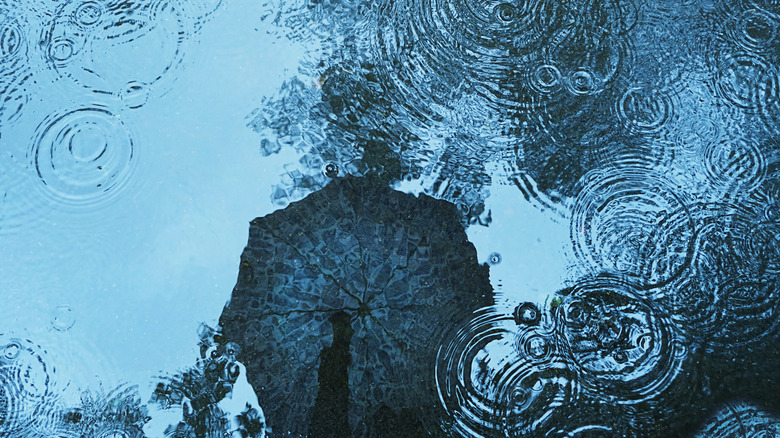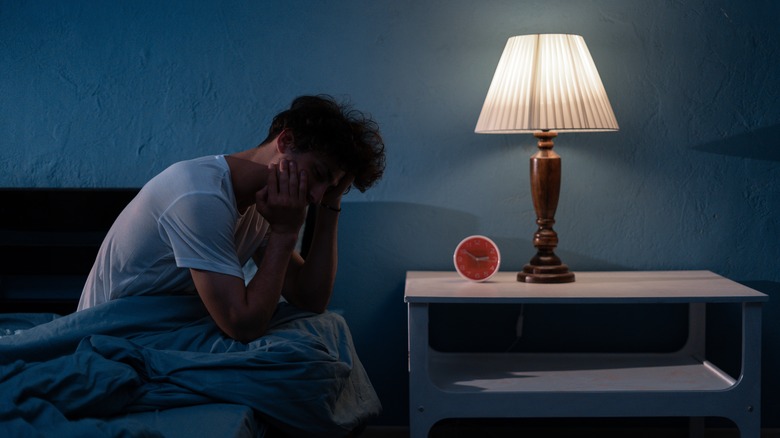The January Blues Explained, According To Science
January is known to be a particularly grim month in the Northern Hemisphere. For many people, it means 31 days of almost constant gray skies, sub-zero temperatures, and a distinct lack of sunlight. Though the days are getting longer, they remain some of the shortest of the year. All in all, conditions in January make the prospect of even leaving the house a challenge.
In popular culture, the depressive aspect of January is said to hit its peak with the arrival of "Blue Monday," the day of the year that one psychologist in the mid-2000s claimed to have identified as the most depressing of the year using a mathematical equation. The claim was later rejected by commentators including doctor of neuroscience Dean Burnett, who writing in The Guardian dismissed the concept of a definitive Blue Monday as pseudoscience (indeed, the "research" originally circulated as part of a press release for a travel company selling vacations). However, the idea that January is a tougher month than others does have some scientific basis, with both psychological and physiological factors at play.
Psychological pressures
The equation underpinning the "Blue Monday" campaign of the mid-2000s was put together by Dr. Cliff Arnall, who included factors such as the weather, post-holiday debt, and the days' distance from Christmas, read as follows according to NBC News:
[W + (D-d)] x TQ
M x NA
While experts have dismissed Arnall's much-shared equation as gibberish, the fact is that such factors may indeed play a psychological role in lowering a person's mood in the new year. The therapist and author Rosemary Sword told Business Insider that January blues can be considered a form of "situational depression," in which a complex combination of seasonal factors contribute to a downturn in mood. These might include regrets around the holiday season and its passing — as Arnall indicates — or the difficulty many people find in attempting to turn over a new leaf in terms of forming new habits or quitting old ones, which may leave people feeling irritable and unmotivated.
Seasonal affective disorder peaks in January
But seasonal depression is not the only cause of the January blues. In recent years, another explanation that takes into account physiological factors has started to become an accepted diagnosis.
Scientists now believe that a sizeable proportion of those who suffer from the so-called January blues may be facing a medical condition known as seasonal affective disorder, or SAD. SAD was only discovered relatively recently, by a team led by Norman E. Rosenthal, M.D. of the National Institute of Mental Health. SAD is believed to be closely linked to a lack of sunlight exposure, leading to a deficiency in vitamin D, lower production of melatonin in the body, and alterations to the body's circadian rhythm. Such changes can lead to a range of symptoms including sluggishness, irritability, despair, and demotivation.
Rosenthal later published a book, "Winter Blues," which popularized the notion of seasonal affective disorder and contributed to its acceptance within the medical community and put forward various tactics to tackle it. Daylight lamps have since emerged as a popular way of mitigating the effects of SAD, while doctors may also supply supplements or medication. The University of Texas Medical Branch reports that some 10 million Americans are believed to suffer from some form of SAD, which experts say represents a challenge in terms of the nation's mental health during the winter months.
If you or someone you know needs help with mental health, please contact the Crisis Text Line by texting HOME to 741741, call the National Alliance on Mental Illness helpline at 1-800-950-NAMI (6264), or visit the National Institute of Mental Health website.


